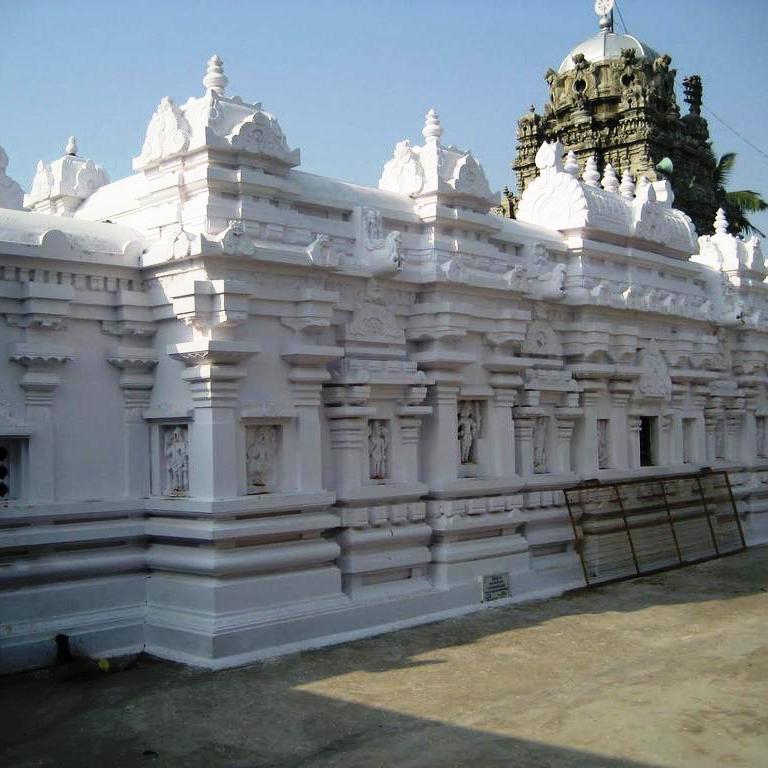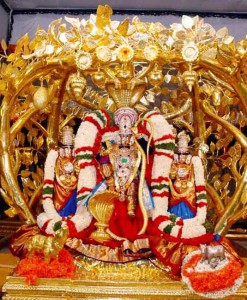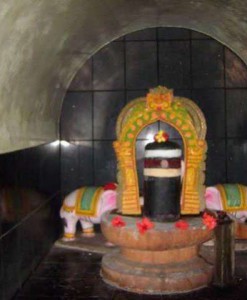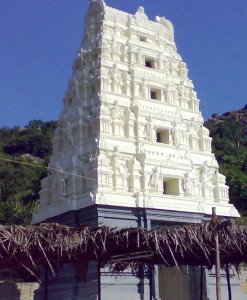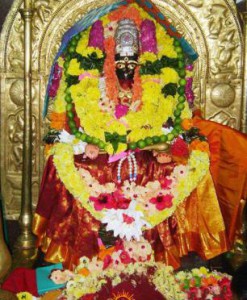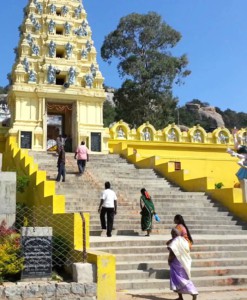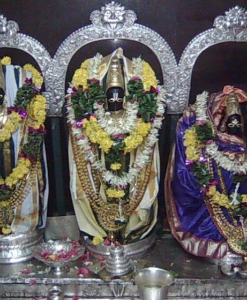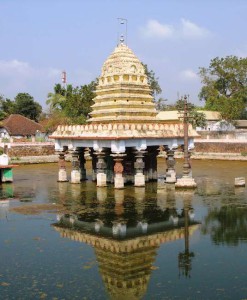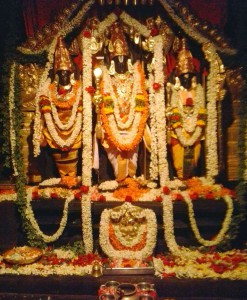No products in the cart.
Srikurmam Temple is in Srikakula area situated on the shores of bay of bengal is only temple in the world only temple Lord Vishnu in the form of kurma avataara.It is a unique temple.
Sri Kurmam Temple,Srikakulam,Andhra Pradesh
- HISTORY
- PROMINENT FEATURES OF THE SHRINE
- DARSHAN, SEWAS, FESTIVALS
- Arjitha Sewas & Amounts
- HOW TO REACH
- VIDEOS
The most sacred and ancient shrine of Sri Kurmam Temple, situated on the shores of bay of bengal, is the only swayambhu temple in the world where lord vishnu is worshipped in the form of kurma avataara (tortoise – the second incarnation of the famous dasa avataaraas).
This ancient shrine is believed to be prior to the golden era of sri raama (raama raajyam).
Prominent references about this shrine are available in kurma , vishnu, padma, brahmaanda puraanaas.
While the shrine is said to be more than a few million years old, outer structures were reconstructed many a time – after dilapidation of previous one , and the latest temple structure is more than 700 years old.
Legend says that during kruta yuga, a pious king – sweta maharaja , observed fierce penance for many years.
Fulfilling his wish, lord vishnu manifested (swayambhu) here in the form of kurma avataar. lord brahma, the creator of universe, himself officiated the celestial rituals and consecrated the shrine with gopaala yantra .
Sweta pushkarini (the lake in front of the temple) is formed by the sudarshan chakra. sri mahaa laxmi (the consort of lord vishnu), emanated from this lake and is adored in the name of sri kurma naayaki, in varadaa mudra posture seated on garuda vaahana.
Sri kurmam shrine is believed to be the “moksha sthaanam” and the sweta pushkarini has cosmic cleansing powers. so, like in varanasi, people perform the last rites of the deceased and drop (nimajjan) the asthikaas (ashes) in it, which eventually metamorphose into saalagraamaas (divine stones). even mother ganga takes a bath in this lake every year on maagha shudha chavithi (around february) to cleanse herself of all the sins left by the devotees .
The prasaadam of the lord is said to possess mystic curative powers – after taking this prasaadam, the celestial dancer “tilottama†became devotional and renunciated desires., king subhaanga won the war., a devotee by name vaasu deva got leprosy cured.
Unlike many other temples ,the presiding deity here is facing west and hence there are two “dwaja stambhaas” (flag posts) in east and west directions. this is also the reason to permit devotees to enter the “garbha gruha” (sanctum sanctorum) for a closer darshan of the lord. this temple is known for its marvellous sculpture, particularly on the southern entrance, apart from the 108 pillars, where no single pillar is similar to the remaining.
The unique stones on the floor in the pradakshina mandapam (circumambulatory passage) are said to infuse magnetic energy into the devotees through their feet. the ancient pictures on these walls, made from natural colours, resemble those in ajanta – ellora caves. “kaasi dwaram” – the under ground tunnel to varanasi in the north eastern corner of the pradakshina mandapam is another magnificent piece of ancient engineering skills. the entry is closed now, since many wild animals and snakes are entering the temple.
Many great people and holy sages offered their prayers in this shrine including,
lava & kusha
(sons of sri raama, belonging to treta yuga – more than a million years ago) .,
bala raama
(elder brother of sri krishna, belonging to dwaapara yuga – more than 5000 years ago) .,
- sage durvaasa (more than 5000 years ago) .,
- sri adi sankaraachaarya (8th century ad).,
- sri raamaanujaachaarya (11th century ad).,
- sri narahari teerthulu (13th century ad).,
- sri chaitanya mahaa prabhu(1512 ad) etc.
Sri kurmanadha is a great bestower of peace & bliss and is said to relieve the doshas related to saturn (sani graha doshas).
To protect this temple from the foreign invaders during 14th – 15th centuries , like in many temples in south india,the priests applied lime stone mix on the entire temple complex and camouflaged as a hillock. the solidified limestone layers are still being peeled off now , and the same are visible even today on the temple walls.
Temples are the pivots of hindu culture. many of our fore fathers sacrificed their lives to protect these invaluable treasures for posterity. with only 3 of the 29 ancient civilizations remaining, and hinduism being one of them, the present generation has the inescapable responsibility to protect, if not further develop, and pass on to the next generations.
As the great sages said “conserve the nature – preserve the culture – to deserve a future”.
Many straws when twined together make a rope – many drops make an ocean , and your generous offerings, however small or big, will go a long way to safeguard our ancient temples like sri kurmam.
More than a Million Year old Shrine where Outer Structures were constructed many a time, the present one being more than 700 years old.
References in Kurma, Vishnu, Padma, Brahmaanda Puranaas.
Only Swayambhu Temple in the World where Maha Vishnu is adored in the form of Kurma (Tortoise) Avataar – 2nd Incarnation of the Famous Dasa Avataaraas of Lord Vishnu.
One of the few Temples in the World with 2 Dwaja Stambhaas – the second one in the west since deity is facing West.
One of the few Vishnu Temples in the World where Abhishekham is performed on daily basis
One of the Few Temples in the World with centuries old rare Mural Paintings similar to those in Ajanta Ellora Caves.
Second Temple in the World with Durga Mata in Vaishno Devi Form., the other being in Vaishno Devi Temple, Jammu & Kashmir State.
Stone Sculpture at its Peak – Called Gaandharva Shilpa Kala. 108 exquisitely carved stone pillars where no pillar is similar to the other, with a few of them hanging from the roof structure without any support from bottom. Under ground Tunnel to Varanasi (KAASI).
Moksha Sthaanam where last rites are performed for deceased , like in Varanasi (U.P.) / Puri (Odisha).
Visited by many great Kings and Saints including Adi Sankaracharya, Ramanujacharya, Narahari Teertha, Chaitanya Maha Prabhu etc
Being a world renowned temple , Darshan is allowed from 6 am to 8pm on all days,with short intermittent closures for Poojas of the Deity. There is a facility for faster/special darshan, for those in a hurry, with special tickets at a nominal amount of rupees ten. Generally it takes less than 30 minutes for Darshan with all devotees being Allowed into the Sanctum Sanctorum (Garbha Gruha).
Srikurmamtemple
However, Devotees are advised to keep sufficient extra time so that they can have a glimpse of the rare and ancient heritage in the Temple. Though there is no Dress code, being an ancient temple, devotees are advised to prefer traditional attire. Photography is allowed except in Sanctum Sanctorum.
Unlike Many Maha Vishnu Temples, Abhishekam (Similar to ThiruManjanam) is performed to the deity on daily basis (Like in Siva Temples) and devotees can opt for participation with a nominal ticket of rupees Hundred. It is performed in the early hours of the day (4.30am – 6am) and devotees can participate in person. Devotees can bring the materials on their own or request Temple Administration for the same at nominal Prices (Milk, Ghee, Curds, Honey, Sugar, Coconuts, Fruit Juices etc).For those not able to be present, the Temple administration arranges to perform the Abhishekham in their Gothra Namam on the day of their choice at a nominal amount of rupees Hundred. Devotees can mail/write/approach the Temple Administration for the same. Those who are unable to make prior arrangements, can directly come to the Temple before 4.30am on any day with or without the Materials, to participate in the Abhishekam. Generally there is enough room for last minute entrants.Please view details on Arjitha Sewas below.
Lord’s Kalyanam is also performed on regular basis. The ticket amount is rupees Five Hundred and Sixteen per couple.Those wanting to participate can Mail/write/ approach the Temple Administration. Please view details on Aarjitha Sewas below.
Some of the main Festivals being celebrated in the Temple are the 3 day Dolotsavam(Falguna Paurnami – popularly known as Holi) , One day Annual Kalyanotsavam (Vaisakha Shudha Ekadasi) , One day Annual JanmaDinam – Jayanthi Festival of Deity on Jyeshta Bahula Dwadasi, One day Festival on Mukkoti Ekadasi etc
- Abhishekham– Rs 100 for one day or Rs 1116 for one day in a year permanently or any amount above Rs 1116 for General Corpus Fund
- Akhanda Deeparadhana – Rs 51 for one day or Rs 1116 for one day in a year permanently or any amount above Rs 1116 for General Corpus Fund
- Nitya Bhogum for Lord (Prasadam) – Rs 300 for one day or Rs 3116 for one day in a year permanently or any amount above Rs 3116 for General Corpus Fund
- Kalyanam – Rs 516 for one day or Rs 5116 for one day in a year permanently or any amount above Rs 5116 for General Corpus Fund
- By road – Busses are available from srikakulam ,Vizag(115km) Vijayawada and Hyderabad
- By trains- Amandalavalasa (20km) is the nearest railwaystation ,Srikakulam is an important railway station and there are also plenty of railways stations from Hyderabad, Vijayawada or viskhapatnam
- By Flights- Vizag is the nearest air port to react here
Accommodation
Moderate accommodation facilities are available at sri kurmam , better facilities are available at rikakulam and Visakhapatnam

